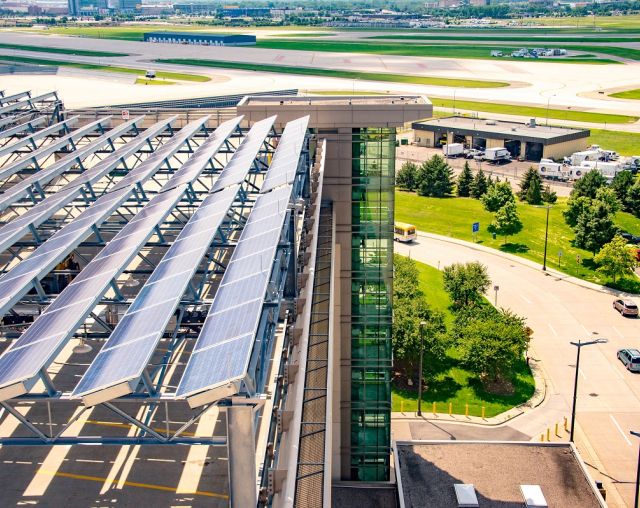Emissions Goal
As an invested member of the global community, the MAC recognizes the importance of both reducing and managing the environmental impacts of its operations. Responsible carbon management strategies that target energy efficiency, renewable energy, and ultimately reductions in carbon emissions, are a critical component of these efforts.

Airport Carbon Accreditation
In 2016, the MAC joined the Airport Carbon Accreditation (ACA) program, a multi-level certification program that encourages and supports airports in developing management plans to reduce their carbon footprint. To date, the MAC has achieved Level 1 certification by mapping emissions from sources that it owns and controls at Minneapolis-St. Paul International Airport (MSP), and Level 2 by showing evidence of effective carbon management procedures. The MAC is committed to achieving ACA Level 3 by 2025 through expanded mapping of emissions beyond MAC ownership and control, such as passenger travel to/from the airport and aircraft landing and take-off cycles. Level 3 will also involve engaging airport stakeholders to reduce emissions.
As an invested member of the global community, the MAC recognizes the importance of both reducing and managing the environmental impacts of its operations. Responsible carbon management strategies that target energy efficiency, renewable energy, and ultimately reductions in carbon emissions, are a critical component of these efforts. The MAC has codified these efforts in our Carbon Policy Statement for MSP Airport and our six reliever airports.

Innovative Aircraft Arrival Procedure
In 2015, Area Navigation (RNAV)/Required Navigation Performance (RNP) arrival procedures were implemented at MSP Airport, including Optimized Profile Descents (OPD). During such descents, aircraft sustain near-idle power settings for longer periods during their approach into MSP, reducing fuel burn and associated greenhouse gas emissions.
The MAC led the effort to quantify the environmental benefits of OPD. Using data from airlines, the MAC found that 79 percent of aircraft utilize OPD into MSP, resulting in an estimated savings of 2.9 million gallons of fuel, and 28,465 fewer metric tons of carbon dioxide emissions.
Airports Council International-North America recognized the MAC with the Environmental Achievement Award in the Special/Innovative Category in 2017 for this work.
Renewable Energy
Recognizing the importance of renewable energy, the MAC installed a 3-megawatt solar energy facility in 2016 – hailed as the first major expansion of solar in Minnesota – atop MSP Terminal 1 parking ramps. The next year, it added another 1.3-megawatt installation atop Terminal 2 parking ramps.
In 2022, the MSP solar arrays generated enough electricity to power 550 homes for one year.

Energy Efficiency
The MAC has taken many actions over the past 25 years to become more energy-efficient, including installing energy-efficient charging stations for ground support equipment on the MSP airfield; creating an Intelligent Monitoring and Control System that integrates and automates HVAC equipment; specifying the use of lighting systems for improved efficiency; converting thousands of metal halide light fixtures to energy-saving LEDs; and installing dozens of electric vehicle charging stations across campus to encourage energy-efficient transportation.
